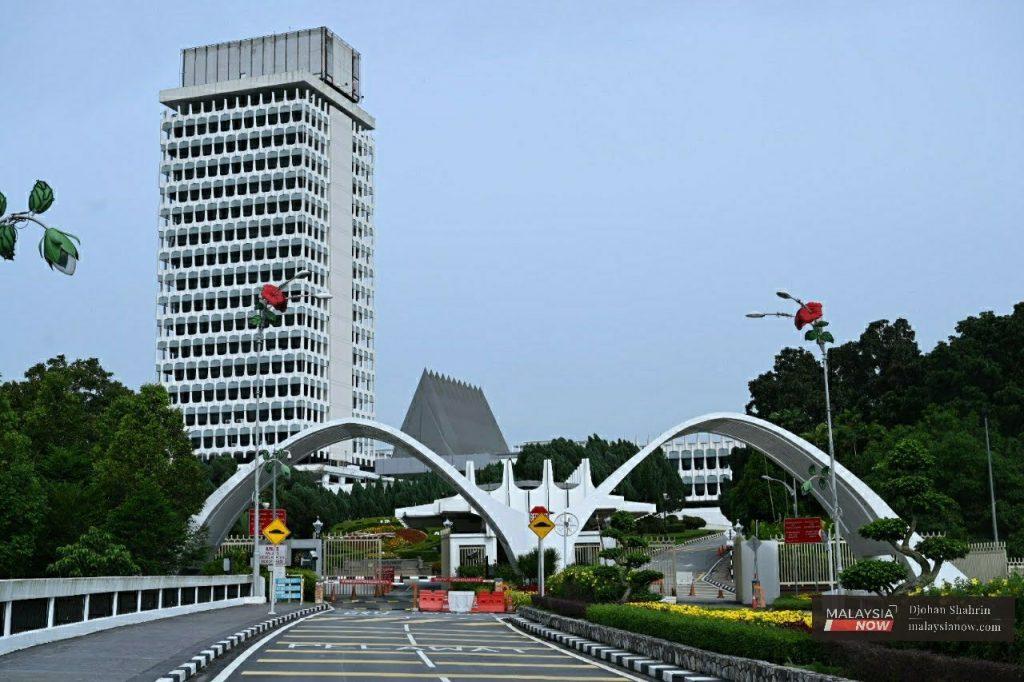In-built safeguards for a safe parliamentary sitting
This should be the beginning of a digital Parliament and the springboard for further modernisation of the House.
Just In
I refer to Loh Chee Kin’s “The maths of holding a Parliament sitting during a pandemic”.
Deputy Dewan Rakyat Speaker Mohd Rashid Hasnon declaring that Parliament has the facilities needed to implement a hybrid Dewan Rakyat sitting at any time if necessary is not surprising and should answer concerns of holding a parliamentary sitting during a pandemic.
For over a year now, many parties have said that Parliament can go virtual and hybrid proceedings can be done. More so after the UK’s historic hybrid sitting of its House of Commons on April 22 last year, prompting the speaker, Lindsay Hoyle, to declare it as the beginning of the digital system and the “springboard for further modernisation of the Westminster [Parliament]”.
In the landmark sitting, the House sat with just 50 MPs in the Commons chamber in order to comply with social distancing rules, and another 120 MPs taking part by video.
Now, back to Rashid. You have to be amazed that the deputy speaker said that for the Dewan Rakyat to convene, it would follow the Dewan Rakyat Standing Orders that set the need to provide a 28-day notice before a sitting can convene.
Article 55(1) of the Federal Constitution mandates the Yang Di-Pertuan Agong to summon Parliament but unlike Article 64(2) of the Constitution of Singapore, it does not mandate the king to summon Parliament “to be held in such places” and “to commence at such times” as the king “may, from time to time, by proclamation in the gazette, appoint”.
Such is, however, provided in the Dewan Rakyat Standing Order 11(1) which allows the king to summon Parliament to be held “in such place on such day and at such hour” as the king may by proclamation appoint.
The king is not bound by the requirement of a 28-day notice, which is spelt out in Standing Order 11(2) as the requirement itself is made subject to Standing Order 11(1). Furthermore, in cases of urgency as may be determined by the speaker, the 28-day notice may be dispensed with, and in that event “the longest notice possible shall be given”. [Standing Order 9(2)(a)]
Otherwise, Rashid is spot-on on the need to look at several Standing Orders that may require amendments, “including the voting process, and all amendments required will be included as an addendum to the existing Standing Orders”.
One way to come around Article 62(5) of the Federal Constitution, that disallows MPs who are “absent from the House to vote”, is to amend the Standing Orders to allow for proxy vote, as was done in the UK’s House of Commons. Proxy vote has been allowed in the House of Commons for female MPs who are on maternity leave.
Another way is to pass a motion of the Dewan Rakyat to allow hybrid proceedings and MPs who participate virtually shall not be counted as “absent from the House”.
After all, Articles 55(1) and 62(5) do not specify that a sitting of Parliament must be physical. And Article 62(1) allows Parliament to regulate its own procedures while Article 63(1) prevents a challenge on the validity of any proceedings in either House of Parliament in any court.
Finally, the Dewan Rakyat need only sit with a quorum of 26 MPs, excluding the speaker or deputy speaker in the chair [Standing Order 13(1)].
So yes to all systems go for hybrid parliamentary proceedings. Parliament too can make history. The Dewan Rakyat can sit in its own chamber and the chamber of the Dewan Negara when the latter does not sit concurrently, and vice versa.
Both chambers are in Parliament House – the place that each House is, in practice, summoned to sit. As long as it is in Parliament House, it is a sitting of the House, whether the Dewan Rakyat or the Dewan Negara. Both chambers can be digitally connected. The House, therefore, sits at two chambers but in the same place – that is, Parliament House where the relevant House is summoned to sit.
Nothing in the Federal Constitution and the Standing Orders prevent such sitting at two chambers in the same place.
It should be the beginning of a digital Parliament and the springboard for further modernisation of Parliament.
There are in-built safeguards for a safe sitting of Parliament. More so when Parliament can go virtual and hybrid. There does not have to be an estimated 850 people in Parliament House, based on Loh’s maths.
Parliament “boleh”!
The views expressed in this article are those of the author(s) and do not necessarily reflect the position of MalaysiaNow.
Subscribe to our newsletter
To be updated with all the latest news and analyses daily.
